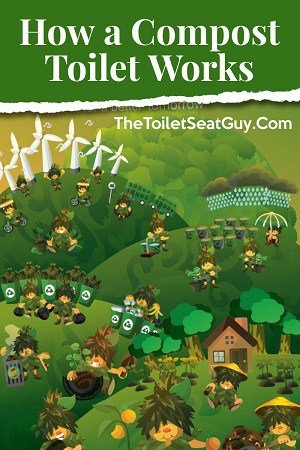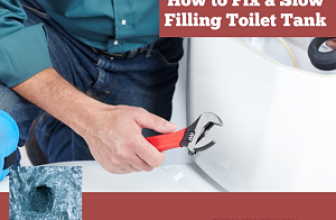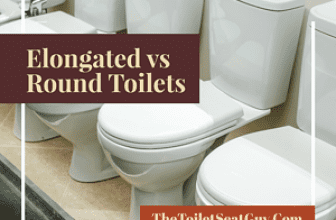 Are you looking to live off the grid in a place without a reliable sewage system, yet realize that building a septic tank is quite expensive? You don’t have to look further than a compost toilet. It is an eco-friendly toilet that allows you to deal with human waste safely.
Are you looking to live off the grid in a place without a reliable sewage system, yet realize that building a septic tank is quite expensive? You don’t have to look further than a compost toilet. It is an eco-friendly toilet that allows you to deal with human waste safely.
A compost toilet is a new concept to many people; that is why we have put up this guide. This article will give you all the essential information you need to know about compost toilets. In the end, you should be able to discern the components, how to balance the main elements, and any other related aspect of a compost toilet.
What is a Compost Toilet?
A compost toilet is a home toilet that does not require water to operate. It turns human waste into safe and usable products using aerobic organisms. You can use the compost from the toilet for landscaping to feed trees and plants.
Compost toilets come in two main types; self-contained and central composting toilets. The self-contained type performs all the composting inside the toilet. It is easier to install and use, and generally is cheaper. However, the major downside is that they are only suitable for a few users and seasonal use.
The central composting toilet, on the other hand, comes with a single position that receives waste from several other toilets. Generally, central composting toilets are located outside the house or in the basement. Although expensive to install and maintain, they are great as a septic tank replacement. This is because they come with a higher capacity and can operate all year through.
Elements of a Composting Toilet
Composting toilets are made of two main elements, which ensure that they attain the desired results.
The squatting/sitting part is meant to allow you to achieve a better position and comfort when using the toilet.
The composting/collection unit is responsible for the whole of the decomposition process. It comes with four different sections, such as;
-
Composting chamber
It receives the poop for the start of the decomposition process. Next, the chamber helps in the natural breakdown of human waste and urine. And finally it converts them into stable organic compounds.
Most storage chambers are built in a slope-shape. This shape allows easy separation of urine from solid wastes. -
Ventilation Unit
The primary function of a ventilation unit is to enhance the degradation process. Also, it improves the aerobic organisms by getting rid of malodorous gases.
-
Leachate Management Mechanism
This is for the quick elimination of excess liquids to avoid mixing with the wastes. It also creates a perfect environment for faster decomposition.
-
Access Door
A composting toilet comes with an access door for extracting the decomposed waste.
How a Compost Toilet Works
 The compost toilet works with the main concept that liquid and solid must stay separate. The presence of fluid in solid waste hinders aerobic activities, leading to odor.
The compost toilet works with the main concept that liquid and solid must stay separate. The presence of fluid in solid waste hinders aerobic activities, leading to odor.
Urine, through gravity, moves to the lowest part of the composting chamber, and gets converted to a nitrogen-rich liquid.
The composting chamber is filled with carbon materials, such as coconut fiber, dried sphagnum, and compost worms. These materials help enhance aerobic activities. The aerobic organisms turn the solid wastes into dry compost material.
To ensure the decomposing process runs seamlessly, you must balance all the four fundamental elements. The level of oxygen, moisture, aerobic material, and temperature.
In most cases, the active elements balancing act depends on the manufacturer’s design. Some manufacturers include a manual agitator for air aerating, which ensures the presence of enough oxygen. Others come with an alternative composting bin for smooth rotation for aeration purposes. And others use electric systems for temperature control. Also, other manufacturers also prefer natural ventilation mechanisms to provide the necessary elements.
Ensure you dispose of the compost properly following the local or/and state guidelines. In most cases, you can use the dry end product for backyard fertilizing, or gardening due to the various plant nutrients it contains.
The Decomposition Time of a Compost Toilet System
There are a lot of factors that determine the speed at which a decomposing process takes place. These aspects include;
-
Toilet Design
As mentioned earlier, different manufacturers use different models for decomposing elements, which affects how fast they are. You get to choose a design depending on where or how long you plan to use the toilet.
Short-term decomposition works best in shorter period use, such as camping and other outdoor activities.
-
Amount of Users
Many users using a decomposing toilet imply a lot of waste that requires an extended period to decompose. It will also need a longer period for a better-integrated system and element balance.
-
Volume of Waste
The capacity of the waste in a compost toilet system determines how fast it decomposes, due to the use of different aspects. Also, some compost toilets are specifically designed for either a lot or little waste. So you have to consider the volume of waste before settling on a perfect composting toilet.
-
The Four Elements Balance
The four main elements in decomposing must balance for quicker processes. Balanced elements also ensure the right end product.
-
Electric or Non-electric Toilets
Electric composting toilets generally work faster than non-electric, which depends on natural elements for the decomposition. You can easily regulate the electrical units and determine the optimum temperature. The only downside is that they are a little more costly to purchase.
How Eco-Friendly is Composting Toilet?
Composting toilets are eco-friendly in various ways. They eliminate the need to use water in the toilet, thus curbs wastage. Most conventional sewer lines use chemicals in recycling and preserving wastes, which ends up hurting the environment and humanity. This toilet type is different from compost toilets that rely on natural elements to convert wastes to end products.
The wastes from the toilet are not disposed of as waste that can degrade the environment. Instead, it is used for environment-friendly activities like gardening and landscaping.
Make sure you consult with your local authority on how best to utilize or dispose of the end product.
Conclusion
A compost toilet is the best option to look for when looking to go for outdoor activities, to live off-grid, or whenever you need an environmentally conscious waste utility.






